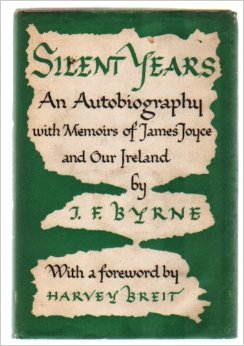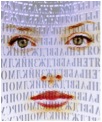By Hamza Patel (Guest Contributor)
Imagine a cipher machine so simple that it could fit inside a cigar box. Now imagine that this same cipher was so complex that it remained unsolved for a half century. In fact, it could only be solved after the family of the inventor revealed the logistics of the simple machine. John F. Byrne accomplished this exact feat with the Chaocipher system he invented in 1918.
John Byrne was born in Ireland in 1880, and he was an extremely close friend of the famous writer, James Joyce. He moved to New York in 1910, and took up a position as a writer. In the year of 1918, Chaocipher was nothing more than an idea in John Byrne’s head. But from 1920 onward, chaocipher would become Byrne’s sole passion (Rubin 2011).
Byrne tried multiple times in the years between 1918 and 1953 to bring his “indecipherable” cipher to the attention of the United States government. He tried approaching people in the U.S. cryptanalyst department and even the Navy, but he was turned down multiple times. The main reason for this rejection was that Byrne was not a cryptanalyst, so he did not understand certain implications when asked to disclose information about specific bits of the cipher, including multiple copies of plaintext and ciphertext. He refused to send the full details of his chaocipher system with several plaintexts and ciphertexts, replying that his system was truly indecipherable (Rubin 2011).
It was not until Byrne published his autobiog raphy, Silent Years, in 1953 that the Chaocipher was finally available to the public. One of the main reasons John published his novel was to disclose the information about this cipher. He included examples of enciphered texts such as the Declaration of Independence and the Gettysburg Address to give the reader examples of ciphertext and plaintext pairs (Rubin 2011). The real challenge presented in the novel was to figure out the chaocipher system itself and decipher the challenge ciphertext.
raphy, Silent Years, in 1953 that the Chaocipher was finally available to the public. One of the main reasons John published his novel was to disclose the information about this cipher. He included examples of enciphered texts such as the Declaration of Independence and the Gettysburg Address to give the reader examples of ciphertext and plaintext pairs (Rubin 2011). The real challenge presented in the novel was to figure out the chaocipher system itself and decipher the challenge ciphertext.
There were many failed attempts at solving the Chaocipher from the time of the autobiography to the time of its disclosure. David Kahn incorrectly assumed that the cipher was an autokey cipher, which is a cipher that includes parts of the plaintext in the key itself. This means that the plaintext being enciphered creates parts of the key as it is being enciphered.
In the latter half of the 1970s, members of the American Cryptogram Association unsuccesfully tried to contact Byrne’s son in the hopes of convincing him to disclose information regarding the cipher. Byrne’s son did not want the machine his father worked so hard on to be revealed so easily to the general public. He did, however, reveal several hints as to how the chaocipher system worked several years later. But people were still stumped.
As late as 2009, cryptanalysts were still trying to figure out the workings of the chaocipher system. In 2010, the chaocipher was finally revealed to Rubin by Patricia Byrnes, John Byrne’s son’s widow. Then on June 2, Rubin published the first full disclosure of the chaocipher system, revealing its inner mechanism (Rubin 2011).
The Inner Mechanism of the Chaocipher
The basic model of Byrne’s machine consists of two wheels, each with the entire alphabet on removable tabs around its periphery (Cowan 2010). The alphabets are arranged in a clockwise manner on the right disk and an anticlockwise manner on the left one. The right disk consists of the plaintext letters while the left disk consists of the ciphertext letters.
Let’s say we are trying to encipher the letter “L.” We will rotate the right wheel so that this letter is at the top of the wheel. Since the wheels are connected like gears, turning the right wheel also turns the left. For simplicity, let’s assume that that turning the left wheel also results in the letter “L” and that the wheels are in alphabetical order. So in this case, the letter “L” would be enciphered as the letter “L.”
Now the alphabets on both disks must be permuted in order to encipher the next letter. For the left disk, we must extract the letter to the left of the letter that was just used to encipher the plaintext letter. Then shift all the letters to the left of the extracted letter up to the bottom letter of the disk to the right to fill up the space of the extracted letter. Finally, insert the extracted letter into the space that is now empty at the bottom of the disk (Rubin 2010).
In our example with the letter “L,” the letter “M” would be extracted, and all of the letters up to the letter “Y” will be moved to the right in order to fill the space that the extracted “M” left. Finally, the letter “M” will be placed at the bottom position of the disk in the position that “Y” had previously. This process is repeated for every new encipherment of every new letter. The sequence of letters would go from this:
To this:
![]()
Next, we must permute the right disk. The permutation of the right disk is slightly different from that of the left disk. After the first letter is enciphered, the disk is rotated by itself one more position to the left. Now, the letter that is two letters to the right of the letter that is currently at the top is extracted. Then, all of the letters to the right of that letter up to the bottom letter of the circular disk are shifted to the left in order to cover up the space that is left by the extracted letter (Rubin 2010).
In our example with the letter “L,” the disk will first be rotated to the left so that “M” is at the top. Then the letter two letters to the left of “M,” “O,” will be extracted. Then every letter up to the letter “Z,” which is at the bottom of the disk, will be shifted to the left. Finally “O” will be placed at the bottom of the disk. This permutation process is repeated with every new encipherment. This repetition causes the entire alphabet on both wheels to quickly permute into an entirely different sequence of letters. The sequence of letters would go from this:
To this:
Once the entire process is revealed, the Chaocipher becomes very simple (Rubin 2010). How then did it remain unsolved for so long? There are several reasons. No one knew how the cipher was constructed, so no one conceived of the way John Byrne used the alphabet disks. The only information given was the ciphertext and the plaintext. But now, how does one go about deciphering a message encrypted by this Chaocipher process? Deciphering the Chaocipher is similar to enciphering. The only difference is that the cipherer must locate the ciphertext on the left disk and find the corresponding letter on the right disk. Permuting the disks is the exact same as it is for the process of enciphering (Rubin 2011). It is a forward and reverse process in and of itself.
The cipher violates Kerkchoff’s principle, the principle that states that the strength of the system is determined by how strong the cipher is assuming that the enemy has full information as to how the cipher was constructed. Once the process was revealed, cracking the cipher becomes very simple.
Yet, this two wheel permutation algorithm did remain elusive from even the nation’s best cryptanalysts for over fifty years. What makes this cipher impressive is that Byrne never had any real formal training in cryptography. Even more impressive, the chaocipher algorithm was never actually found; it was only revealed. The Chaocipher truly is one of the simplest yet most complex ciphers developed in modern cryptography.
This post is part of a series of essays on the history of cryptography produced by students at Vanderbilt University in honor of the release of The Imitation Game, a major motion picture about the life of British codebreaker and mathematician Alan Turing. The students wrote these essays for an assignment in a first-year writing seminar taught by mathematics instructor Derek Bruff. For more information on the cryptography seminar, see the course blog. And for more information on The Imitation Game, which opens in the US on November 28, 2014, see the film’s website.
Sources:
Cowan, Michael J. (2010). Chaocipher: Solving Exhibits 1 and 4. Retrieved from http://www.cryptoden.com/articles/Chao%20paper%20.pdf.
Rubin, M. (2010). Chaocipher Revealed: The Algorithm.
Rubin, M. (2011). John F. Byrne’s Chaocipher Revealed: An Historical and Technical Appraisal. Cryptologia, 35(4), 328-379.

